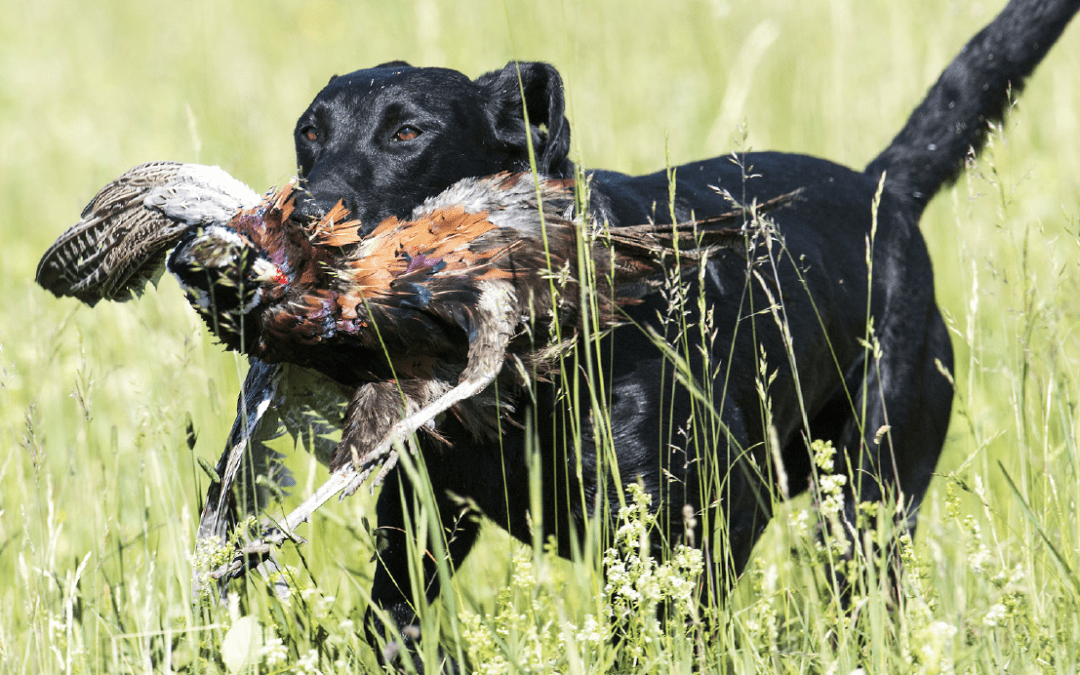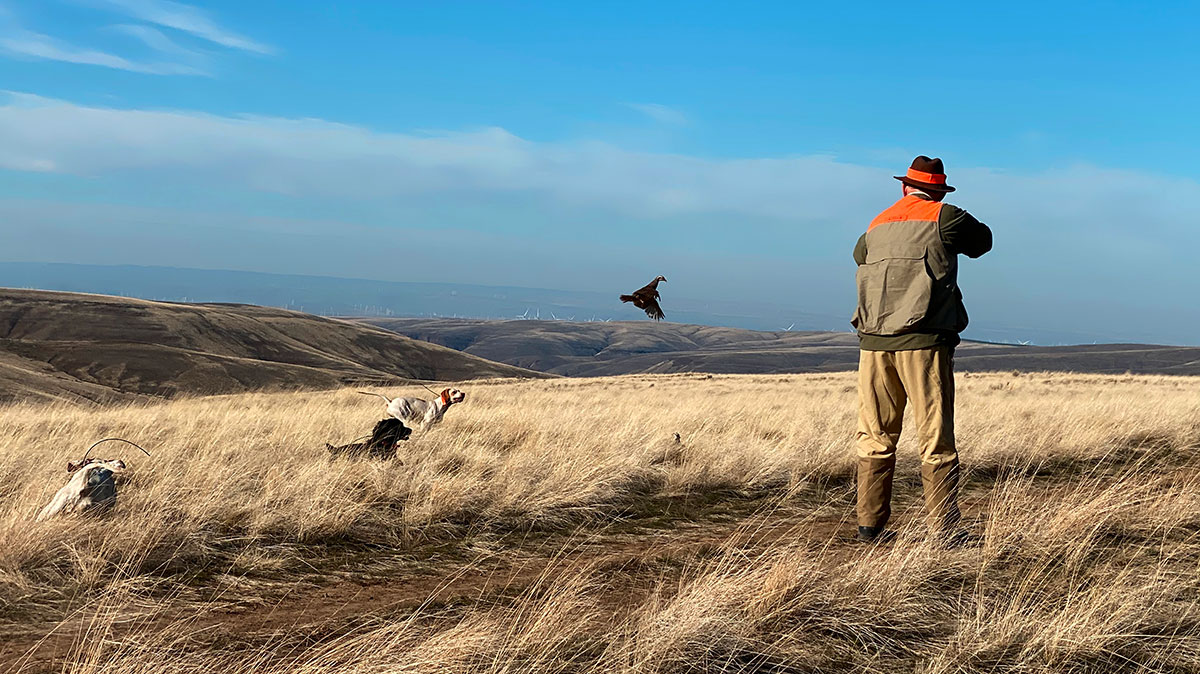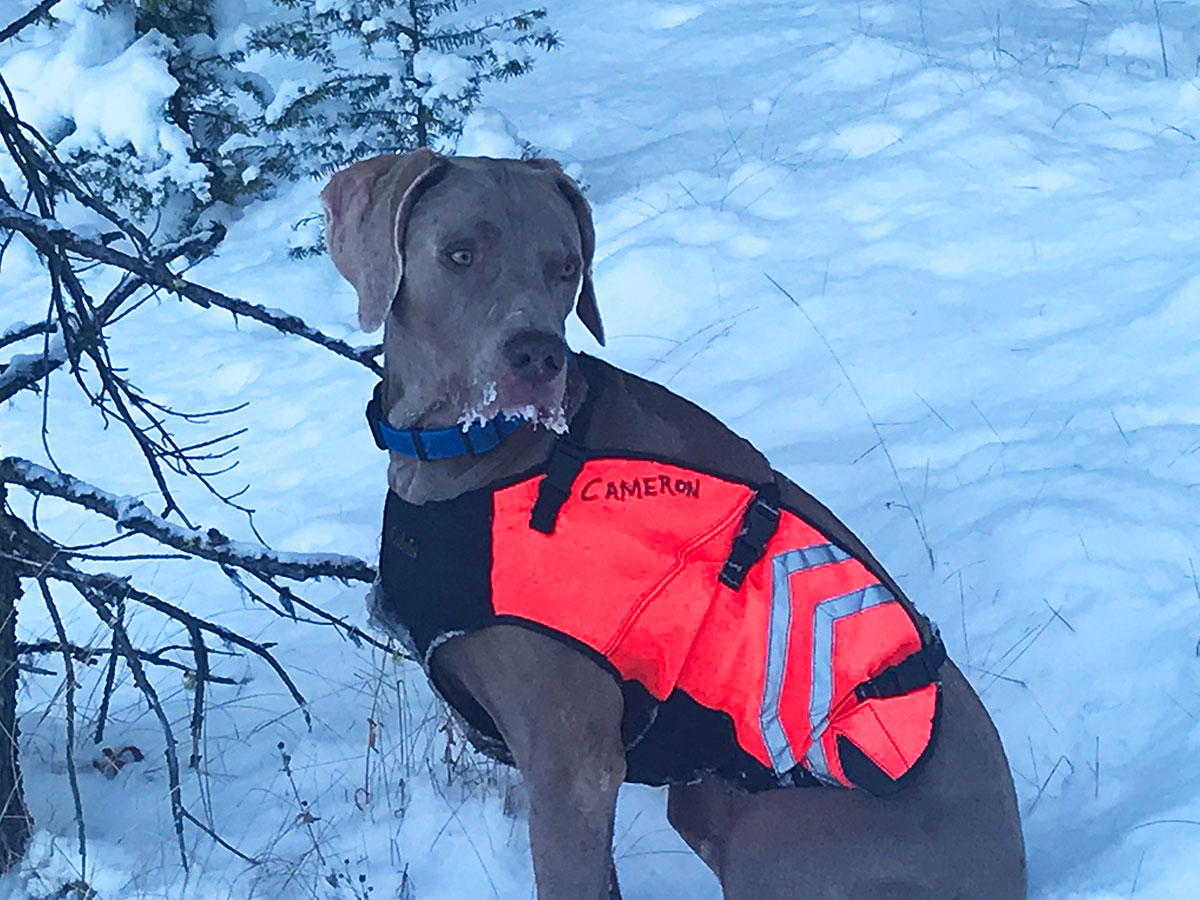Two days after winning an 82-dog open all-age stake in the summer of 2016, Labrador retriever Stinger was barely able to walk…
We’re all suckers for a comeback story, and one is, of course, Tiger Woods. Crippled by multiple injuries, his career in limbo and his quest to match Jack Nicklaus’ record of 18 major championships seemingly dead in the water, he rose, Lazarus-like, to win his 15th major—and fifth green jacket—on the hallowed vales of Augusta National.
Well, without putting too fine a point on it, the Tiger Woods of retriever field trials is a male black Lab named FC-AFC B Bumble, call name “Stinger.” Literally two days after winning an 82-dog open all-age stake in the summer of 2016, Stinger was barely able to walk. Rushed to the veterinarian by his owner, Oskhosh, Wisconsin, sportsman Fred Kampo (who happens to be the president of the Labrador Retriever Club of America and a member of the Retriever Field Trial Hall of Fame), Stinger was diagnosed with blastomycosis.
A fungal infection that starts in the lungs, “blasto” eventually spreads via the bloodstream or the lymphatic system to other parts of the body, often with devastating results—and sometimes with deadly ones. In Stinger’s case, the disease attacked his vertebrae and, with his spinal cord at risk, all off-lead activity was immediately suspended. For nearly five months, while being treated with the powerful anti-fungal drug Itraconazole and allowed to take only short walks to relieve himself, this superstar canine athlete was confined to a crate.
Since I’ve already let the cat out of the bag and told you that Stinger’s story mirrors Tiger’s, you’ve undoubtedly deduced that he not only made a complete recovery, but that he reclaimed his former field trial glory as well. The difference is that Stinger didn’t slowly work his way back into the mix the way Tiger did; he vaulted straight to the top. He won two of his first four field trial starts upon his return to competition, a remarkable accomplishment under any circumstances but mind-boggling for a dog coming back less than a year after being knocked off his feet, literally, by an illness that had the potential to end not just his career, but his life.
And what about this illness? While all but unknown in the western part of the country, blastomycosis is something that dog owners in the East, South and Midwest—and dog owners who travel to hunt or compete in these areas— absolutely need to be aware of. It’s especially prevalent in the Mississippi, Ohio and St. Lawrence River valleys, the Great Lakes states, and certain parts of central and eastern Canada.
If there’s a Ground Zero for blastomycosis, though, it’s northern Wisconsin. In certain counties there, reported rates of the disease run 10 to 20 times the national average.

Talented photographer, Mark Atwater, took this portrait of Stinger at the 2016 National Retriever Championship. Stinger was diagnosed with blastomycosis within weeks of the event.
Blastomycosis is caused by a fungal mold, Blastomyces dermatitidis, that’s associated with moist, slightly acidic soils and decomposing organic matter such as wood and leaves. The mold releases microscopic spores into the air and, when these spores are inhaled into the lungs, infection may result. Blasto can also result when spores are introduced to an open wound, but this mode of infection is rare. The disease isn’t contagious; in cases when dogs and their owners have both developed blasto, it’s because they were exposed to the spores at the same time.
A variety of critters can contract blasto, including cats, horses, ferrets, lions and even polar bears. By far the two most commonly infected species, however, are dogs and humans, with dogs ten times more likely to develop the disease than humans are.
Exposure to earth-moving activities has been shown to increase the blasto risk in humans, presumably because it liberates large quantities of spores into the air, but the real smoking gun in the blastomycosis equation is proximity to water. Multiple studies have shown that dogs living within 400 meters of water are more likely to develop blastomycosis than other dogs. The shores of beaver ponds, in particular, are notorious blasto “hotspots.”
In any event, the Blastomyces organism flourishes only under certain environmental conditions, which helps explain why dogs that spend a lot of time outdoors—such as hunting dogs—are at higher risk for blastomycosis than dogs that rarely leave the couch. Statistically, males are slightly more likely to develop blasto than females, with peak susceptibility to the disease occurring between one and five years of age.
Any dog exhibiting clinical signs of blastomycosis requires immediate veterinary attention—and any dog diagnosed with the disease requires prompt, aggressive treatment in order to achieve a full recovery. There’s no “wait and see” with blasto; regardless of how mild the symptoms may appear, this is a disease with life-threatening potential. It demands to be taken very, very seriously.
According to Dr. Alfred Legendre, an infectious disease specialist at the University of Tennessee’s College of Veterinary Medicine, the first thing most owners notice in dogs infected with blasto is that they begin breathing “hard,” as if they’re having difficulty getting enough air into their lungs. This labored respiration is typically accompanied by dry, raspy chest sounds and sometimes by intermittent coughing. Many owners notice a decline in their dogs’ energy and stamina levels as well.
Other common warning signs, notes Legendre, include limping or lameness (as in Stinger’s case); “oozy” skin lesions on the nose, mouth or pads of the feet (although other areas can be affected as well); inflamed eyes; and enlarged lymph nodes.
The kicker is that any number of conditions can produce these symptoms, and if you live where veterinarians don’t see a lot of blasto, it may not be on their radar. This is why, if you travel to hunt or compete with your dog and any of these symptoms manifest themselves, it’s critically important to tell your vet where you’ve been.
Once a definitive diagnosis of blastomycosis has been reached, treatment with anti-fungal drugs should start immediately. As mentioned earlier, the current fungicide of choice is Itraconazole—ITZ, for short. Its only disadvantage, according to Legendre, is that it’s relatively expensive: $8 to $12 per tablet, with a Labrador-sized dog typically requiring two or three tablets a day for at least 90 days. Fluconazole is less expensive but not as effective, requiring a longer period of administration to achieve the same result.
“Most dogs do quite well with treatment,” observes Legendre. “They can be expected to make a full recovery and return to doing all the things they did prior to the onset of symptoms.”
The exceptions, he notes, are dogs whose blastomycosis has spread to the brain—they usually die, unfortunately— and dogs with severe lung involvement. In these cases, the fungicide can trigger an inflammatory response that leads to pneumonia, making the initial days of treatment a critical period.
“Most dogs who die from blasto die within the first seven days of treatment,” says Legendre. “If they’re able to survive long enough to get past the pneumonia, their prognosis improves significantly.”
Because blastomycosis is caused by an organism that occurs naturally in the environment, there’s almost nothing you can do as a dog owner— short of putting your dog under house arrest—to eliminate the risk of infection. Obviously, you should try to steer clear of areas where dogs (or people) have been known to contract the disease but this isn’t always possible.
Dr. Legendre’s best advice is this: “Keep an eye on your dog, be aware of the symptoms of blastomycosis, and if you notice anything that strikes you as suspicious, share your concerns with your veterinarian.”
Circling back to Stinger, since his triumphant return to the field trial wars, he’s only continued his winning ways. The really good news, though, is that even if Stinger does continue his winning streak, neither he nor his owner will be required to wear a green jacket. Damn those things are ugly.
 Share your love for your Lab and the many wonderful stories of the hunt by wearing this beautiful detailed Labrador belt buckle and bottle opener. This design shows in depth detail and familiar traits of Labs there identifaible Characteristics. Each buckle is handmade from Tumbaga, a blend of silver, gold, and brass. All designs are branded with our HNH signature to ensure origin and numerical lineage. Due to the handmade nature of this product, slight variations will occur. Over time each buckle captures a unique colorful patina emulating the simple details of the ducks handsome features. Buy Now
Share your love for your Lab and the many wonderful stories of the hunt by wearing this beautiful detailed Labrador belt buckle and bottle opener. This design shows in depth detail and familiar traits of Labs there identifaible Characteristics. Each buckle is handmade from Tumbaga, a blend of silver, gold, and brass. All designs are branded with our HNH signature to ensure origin and numerical lineage. Due to the handmade nature of this product, slight variations will occur. Over time each buckle captures a unique colorful patina emulating the simple details of the ducks handsome features. Buy Now




